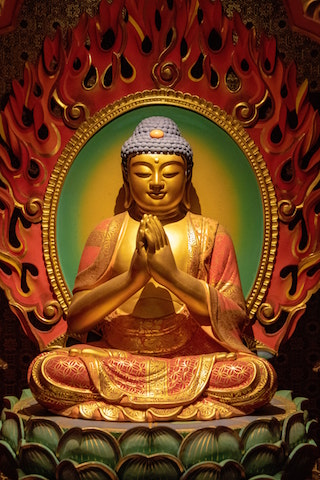The following are excerpts from the book, “The Tapestry of Being: Talks on Practical Mysticism” to learn more about the Tapestry Mandala and how the different color nodes relate go to : https://www.tapestryofbeing.org/the-tapestry-of-being-mandala/ and scroll down to “The Tapestry Mandala”
The limitations of any teaching become apparent when we take it as a complete and total explanation of the Mystery of Existence. We can fall into a similar trap if we just dismiss any teaching that seems partial. It’s useful to “try on” the understanding of something even if at first glance it seems incomplete.

As mentioned before, the approach of “there’s a way in which” opens us to listen and learn. It brings respect and dignity to all parties, and it’s to our advantage to be able to receive benefits from all the different information available.

When we see from only one perspective, we limit Being’s capacity to teach us. If we are willing to trust that we will learn something even when we go astray, then we can move forward and hone our discrimination as we go along.

For example, the traditions of Advaita Vedanta and Zen Buddhism teach that only Consciousness is real and that what appears to us as the world is a kind of illusion or mirage that only causes confusion if it is taken to be real. However, the Non-dual Hindu Tantra tradition teaches that both Consciousness and what appears to us as the world are real, but that they are not usually seen or experienced by us as thoroughly as they could be.
The Tapestry approach is that while listening to a teaching such as Advaita Vedanta, we ask ourselves this: Can we grant that somewhere along the line, perhaps in a way that we might not appreciate yet, it might be valuable for me to have access to the way in which the world is an illusion? And with that, we listen.

With this trust and openness, you can make full use of non-duality teachings that say the universe is an illusion. It helps you to see fully, appreciate and benefit from the perspective that knows the way in which the universe IS an illusion.

When approaching those teachings, it is useful to simply be interested in experiencing what those teachers mean when they say it’s an illusion, and to let the teaching have us. We can choose to take the attitude that we just want to have the experience that is being described. The phrase “There’s a way in which” makes it possible for you to then turn around and use non-dual teachings that seem to say exactly the opposite— those, such as Hindu Tantra, that insist on the way in which the world is real, and approach them with the same openness.

When approaching those Tantric teachings, it is useful to simply be interested in experiencing what those teachings mean when they say Consciousness and Matter are non-separate or non-different. In that way, we’re letting that particular teaching have us. You may find for yourself a nuance or aspect of the experience that makes sense of the apparent contradiction if you work this way.
You can take on both points of view without having to know which is “really” the highest truth.
Similarly, if I’m doing Blue node work like working with a psychotherapist, I’m working with the ordinary, consensus reality version of “me” showing up and being authentic. In this kind of situation, I’m not concerned about whether any of what I share conforms to the reality of the Red or Purple nodes. At such times, I’m not referring to life as an illusion or a paradox. I’m just presenting myself as a human person living from my relative subjectivity. In the Blue node, the world I see is the planet earth of shared relative objectivity—consensus reality—and I live in the way in which all of that is real.
Of course, our experience of any one node is often naturally affected by our degree of development in particular other nodes but you are not necessarily trying to “fit” anything from your experience of one node into another. And even if you do find yourself trying to figure such things out, that’s not the main point from the perspective of the Tapestry.
The Tapestry is a way to orient to Mystery using both your own personal experience and the spiritual insights of the ages. The Tapestry is not about trying to figure out who’s got the best, most complete system, and it’s not itself another map of systems. The Tapestry is an orienting towards Mystery in Mystery.
(From The Tapestry of Being Chapter 1: The Tapestry Mandala)
